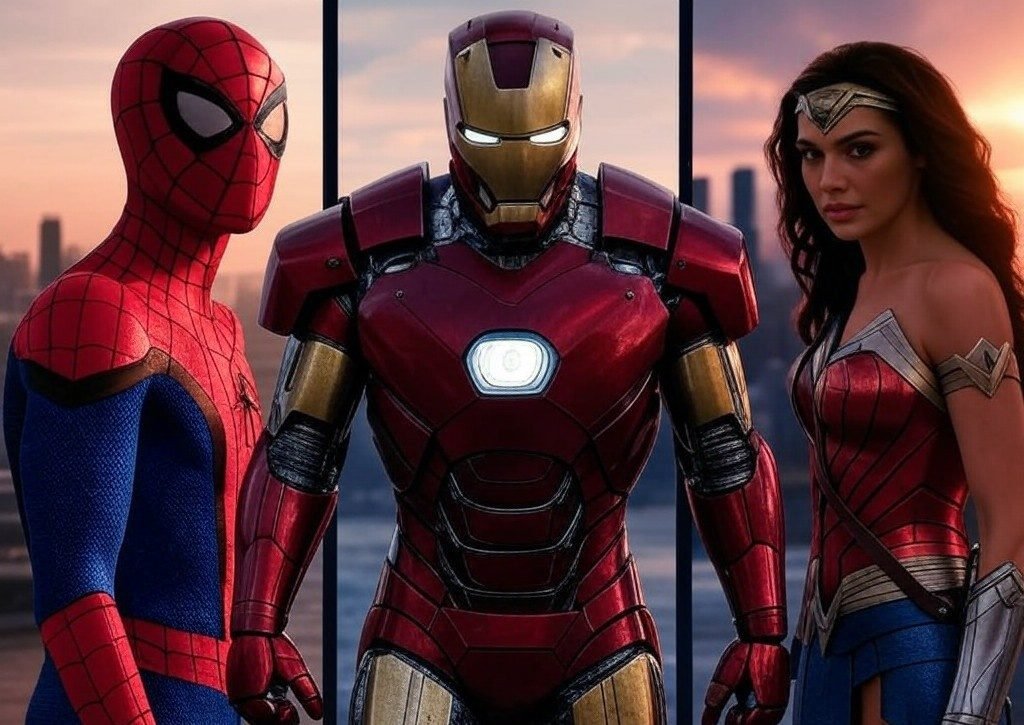Superhero movies have come a long way since their early, campy beginnings. What was once a genre relegated to niche comic book fans has now exploded into a cultural phenomenon dominating box offices, streaming platforms, and even fashion trends. It’s hard to imagine a world where the Avengers, Batman, or Wonder Woman weren’t part of our everyday conversations, but this transformation didn’t happen overnight. Let’s dive into the captivating journey of superhero cinema and explore how it became the juggernaut it is today.
The Early Days: A Foundation of Hope and Imagination
Superhero movies had humble beginnings. The first recognizable superhero film was 1941’s Adventures of Captain Marvel, a black-and-white serial based on the character we now know as Shazam. These serialized adventures, often low-budget and limited in scope, were aimed primarily at children and fans of comic strips. Characters like Superman and Batman also made their screen debuts in the mid-20th century, with George Reeves’ Adventures of Superman and Adam West’s campy Batman series capturing hearts.
But let’s be honest: those productions were more about fun than substance. Special effects were rudimentary, stories were simple, and the depth we now associate with these characters was largely absent. Yet, they laid the groundwork, establishing superheroes as larger-than-life figures who could leap off the page and into our lives.
The 1970s and 1980s: Superman Takes Flight
If you’re talking about the movie that truly put superhero cinema on the map, it’s Richard Donner’s Superman: The Movie (1978). Christopher Reeve’s portrayal of the Man of Steel wasn’t just iconic—it was revolutionary. Donner’s approach treated the subject matter with reverence, balancing humor, heart, and action. For the first time, audiences were asked to take superheroes seriously, and they responded with enthusiasm.
The 1980s continued this momentum with Tim Burton’s Batman (1989), which introduced a darker, gothic tone to the genre. Michael Keaton as Bruce Wayne and Jack Nicholson’s Joker delivered performances that were both entertaining and complex. Burton’s film proved that superhero movies could appeal to adults, not just kids. The music, the atmosphere, the bat symbol—it was all iconic, sparking a wave of Batmania that would influence Hollywood for years.
The 1990s: A Decade of Mixed Results
Here’s the thing about the ’90s: it was both a blessing and a curse for superhero movies. On one hand, it gave us gems like Sam Raimi’s Darkman (1990) and the cult classic The Crow (1994), which showed the genre could thrive outside mainstream comic adaptations. On the other, it also gave us flops like Batman & Robin (1997), infamous for its campy tone, cringe-worthy dialogue, and yes, George Clooney’s bat-nipples.
Despite the setbacks, the 1990s planted important seeds. Blade, a relatively obscure Marvel character, became a surprise hit in 1998. Wesley Snipes brought a gritty edge to the role, proving that audiences were ready for R-rated superhero fare. This success was a sign of things to come—a future where studios would take bigger creative risks.
The Early 2000s: The Rise of the Modern Superhero Blockbuster
Enter the 2000s, where superhero movies transitioned from quirky experiments to bona fide blockbusters. The game-changer? Bryan Singer’s X-Men (2000). The film streamlined the sprawling mutant universe into a digestible, character-driven story. Hugh Jackman’s Wolverine became an instant icon, and the movie’s success opened the door for Marvel properties to dominate the decade.
Not to be outdone, Sam Raimi’s Spider-Man (2002) became a cultural sensation. Tobey Maguire swung into theaters and shattered records, with audiences marveling (pun intended) at the web-slinger’s relatable struggles and jaw-dropping action sequences. Its sequel, Spider-Man 2 (2004), is still considered one of the best superhero movies ever made, thanks to its blend of emotional depth and thrilling spectacle.
During this time, DC wasn’t sitting idle. Christopher Nolan’s Batman Begins (2005) gave the Caped Crusader a gritty reboot, setting the stage for one of cinema’s most celebrated trilogies. The film’s grounded approach paved the way for more mature superhero narratives, proving that comic book stories could tackle heavy themes like fear, corruption, and identity.
The Marvel Cinematic Universe: Redefining Hollywood
When we talk about the modern superhero movie boom, it’s impossible not to mention the Marvel Cinematic Universe (MCU). Launched in 2008 with Jon Favreau’s Iron Man, the MCU introduced audiences to a shared universe concept that had previously only existed in comics. Robert Downey Jr.’s charismatic Tony Stark set the tone, and the post-credits tease of an Avengers initiative had fans buzzing.
Marvel’s interconnected storytelling was a stroke of genius. Each film built on the last, creating a tapestry of characters and plots that culminated in massive crossover events like The Avengers (2012) and Avengers: Endgame (2019). By blending humor, heart, and breathtaking action, Marvel struck gold, consistently breaking box-office records and shaping the industry’s future.
DC’s Struggles and Comeback
While Marvel soared, DC struggled to find its footing. Films like Green Lantern (2011) and Justice League (2017) were met with lukewarm receptions, but that didn’t mean the studio was out of the fight. Zack Snyder’s Man of Steel (2013) and Patty Jenkins’ Wonder Woman (2017) showed that DC could still deliver hits.
The recent success of films like Aquaman (2018), The Suicide Squad (2021), and Matt Reeves’ The Batman (2022) indicates that DC is learning to embrace its unique style. Instead of copying Marvel, DC is leaning into its darker, auteur-driven approach, which could prove to be a winning strategy in the long run.
Diversity and Representation: A New Era of Heroes
One of the most exciting trends in superhero cinema today is its increasing focus on diversity and representation. Films like Black Panther (2018), Shang-Chi and the Legend of the Ten Rings (2021), and The Marvels (2023) showcase heroes from a variety of backgrounds, reflecting the world’s rich tapestry of cultures.
This inclusivity isn’t just a moral imperative—it’s also good business. Audiences want to see themselves reflected on screen, and studios are finally stepping up to deliver. It’s a powerful reminder that anyone can be a hero, regardless of race, gender, or identity.
What’s Next for Superhero Cinema?
As we look to the future, the superhero genre shows no signs of slowing down. With projects like Deadpool 3, James Gunn’s revamped DCU, and Marvel’s upcoming Secret Wars, there’s plenty to be excited about. However, the question remains: can superhero movies continue to innovate, or will audiences eventually experience fatigue?
Streaming services are also changing the game, with shows like The Boys and Invincible offering edgier, more subversive takes on the genre. These series prove there’s still room for creativity, even in a crowded market.
At its core, the superhero genre endures because it taps into something universal: the desire to see good triumph over evil. Whether it’s a billionaire in a batsuit, a demigoddess with a lasso, or a kid from Queens with spider powers, these stories remind us of our own potential for greatness.
Superhero cinema has grown up, but it hasn’t lost its heart. As long as there are new heroes to discover and new battles to fight, we’ll keep flocking to theaters (or streaming platforms) to witness the extraordinary.





